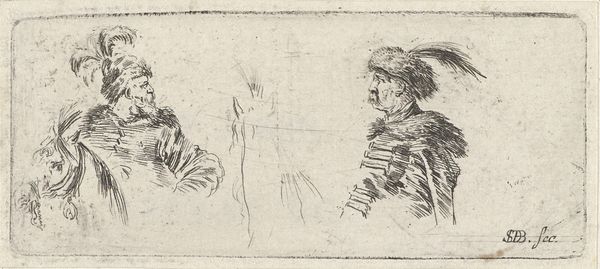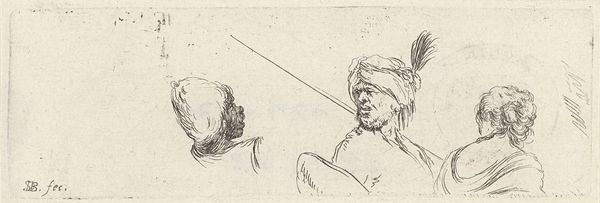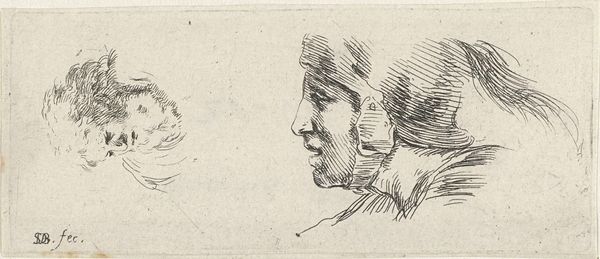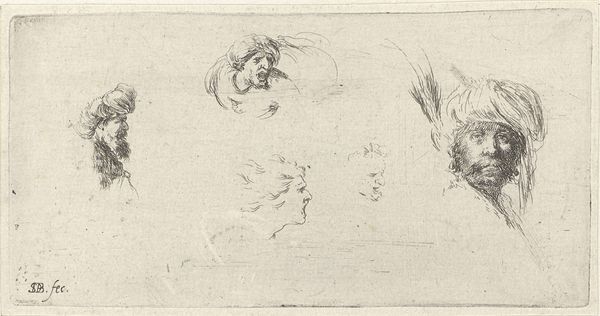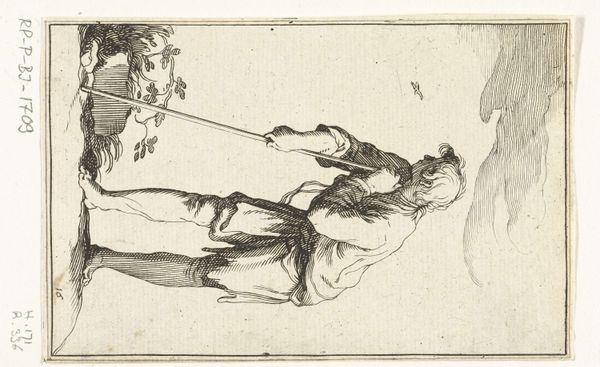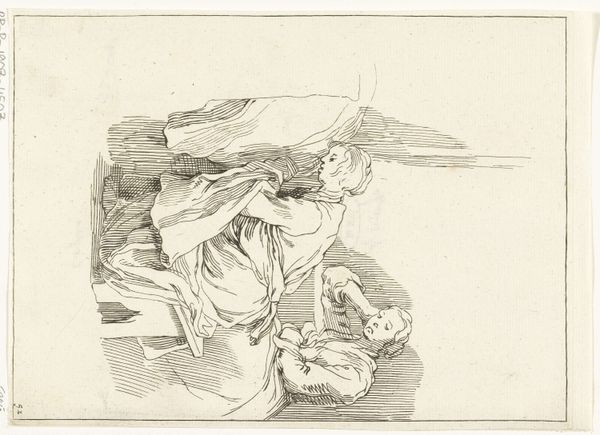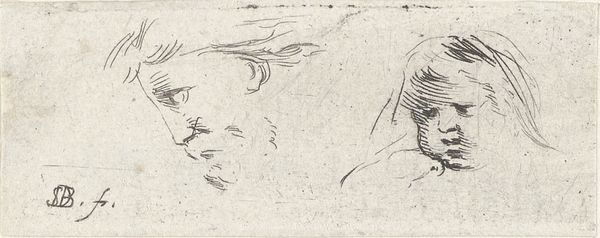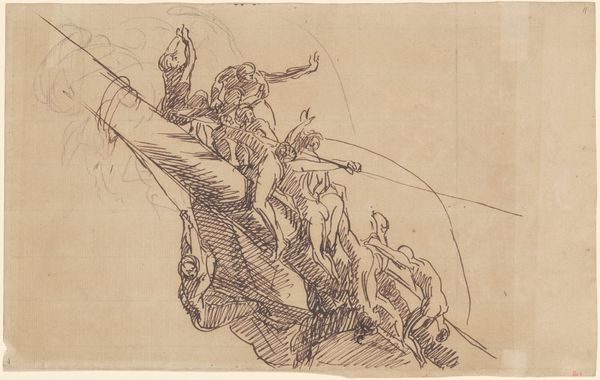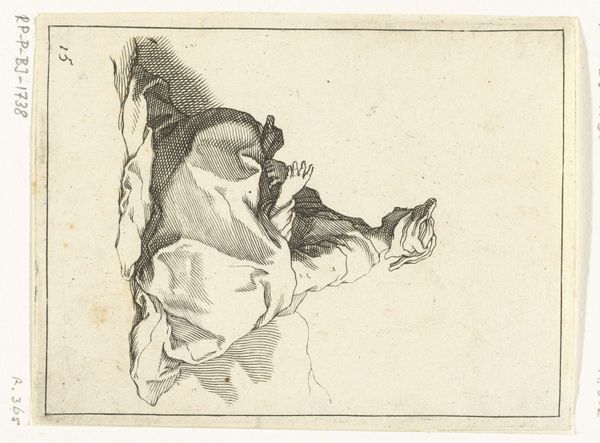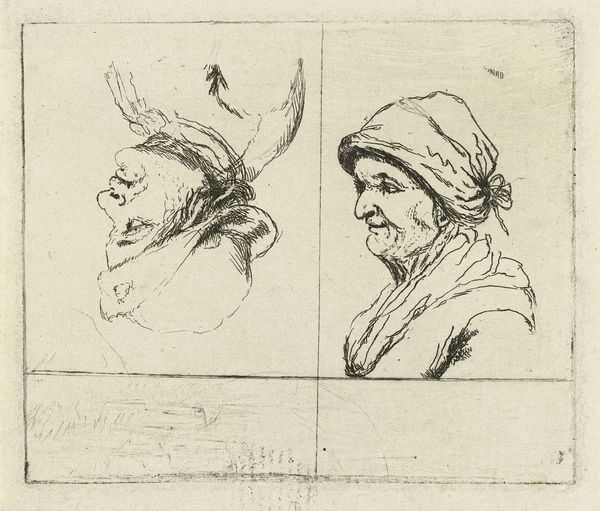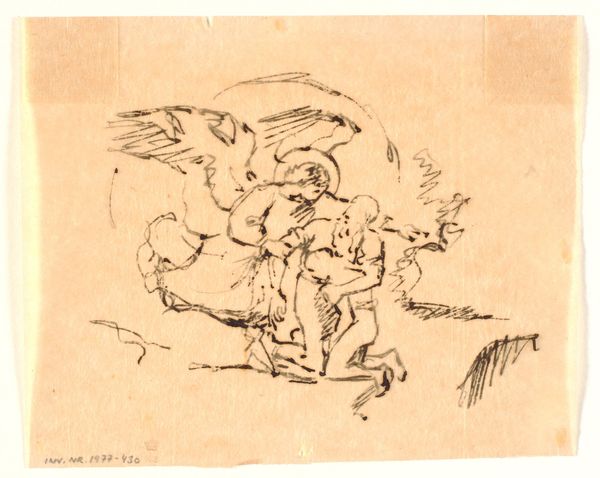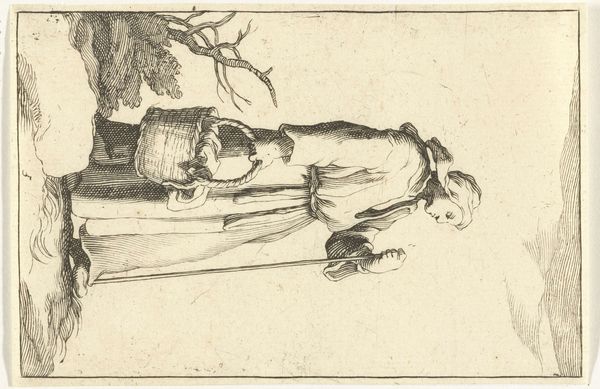
Buste van een schreeuwende uitgemergelde man en buste van een man met baret met pluim 1620 - 1657
0:00
0:00
drawing, ink, pen
#
portrait
#
drawing
#
baroque
#
pencil sketch
#
figuration
#
ink
#
pen-ink sketch
#
line
#
pen
Dimensions: height 37 mm, width 85 mm
Copyright: Rijks Museum: Open Domain
Curator: This drawing, dating from between 1620 and 1657, is titled "Buste van een schreeuwende uitgemergelde man en buste van een man met baret met pluim," which translates to "Bust of a screaming emaciated man and bust of a man with a plumed beret." It's the work of Stefano della Bella and done with pen and ink. Editor: Well, my immediate reaction is stark contrast. One figure seems consumed by suffering, the other adorned and, relatively speaking, composed. Curator: Precisely. Della Bella’s skillful use of line emphasizes this dichotomy. Notice the frenetic, almost chaotic lines depicting the screaming man, compared to the more controlled, cross-hatched strokes defining the figure in the beret. It creates visual tension, doesn’t it? Editor: Indeed, and beyond mere visual contrast, one has to wonder about the social realities reflected here. The "emaciated man" conjures images of famine, plague, or perhaps even the brutal realities of warfare prevalent during the Baroque era. The other figure’s attire marks him with privilege, almost mocking the suffering nearby. Curator: An astute observation. Formally, the composition is divided, yet united by Della Bella's technique. But it's hard to miss how these compositions serve a propagandistic function for wealth, the figure on the right, while presenting poverty in grotesque terms that justify the very power structures that caused it. Editor: I am fascinated by how such simplicity of material, just pen and ink, and line, can express so much of the era's power dynamic and tension. This drawing really showcases the range of human experience within, presumably, the same society. Curator: Yes. It serves as a powerful reminder of the complexities inherent in Baroque art. Beyond its surface elegance, there is often a confrontation with the raw and unequal realities of the world. Editor: So, in a sense, a sketch like this functions almost as a brutal, compact historical record—documenting wealth but never eliding inequality. Curator: Absolutely. And on a deeper level, the artwork reveals art’s role in recording these stark polarities as they come to be represented—or not—in history. Thank you for your sharp reading.
Comments
No comments
Be the first to comment and join the conversation on the ultimate creative platform.
